
Datsun Go vs Hyundai Eon Comparison Review: In Pictures!
- Apr 15, 2014
- Views : 240366

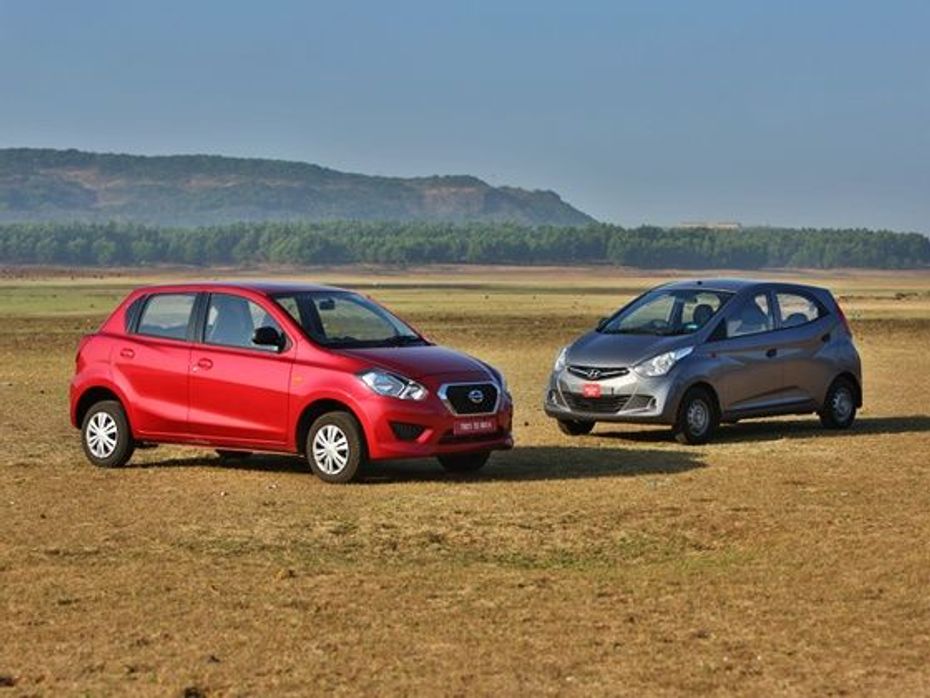
The Datsun Go is the newest entrant into the cutthroat sub Rs 4 lakh hatchback segment, and keen readers of ZigWheels might remember how it did manage to impress us quite a bit recently. With a zesty engine, decent handling, good space (for its class) and a general feel good factor about it, the Go is a pretty potent machine to go up against the likes of the Maruti Suzuki Alto and the Hyundai Eon. We put the Datsun Go up against the Hyundai Eon to see if Japan’s resurrection could combat Korea’s dominance.
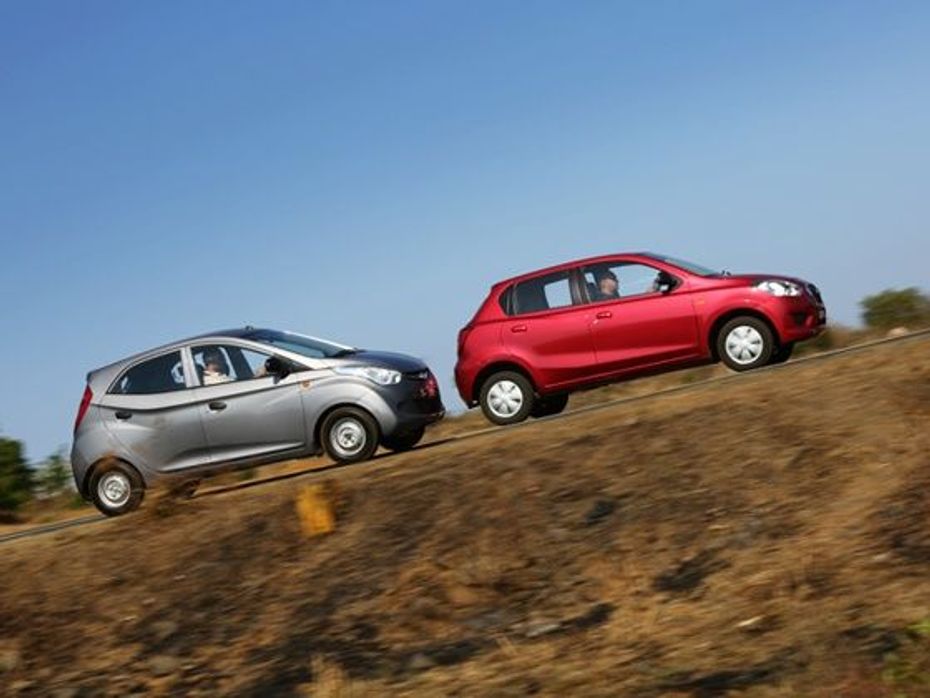
Lets start with styling. The Datsun Go and the Hyundai Eon, although priced very similarly, are styled very differently. Where the Eon adopts the recent global trend in egg shaped hatchbacks, which maximise interior space while keeping exterior dimensions to a minimum, the Go adopts a more conventional strategy. The Go is not only a larger vehicle than the Eon but also looks more balanced in terms of overall design. Where the Eon’s short and rounded nose gives the car a more upright and ‘tallboy’ look, the Datsun Go’s elongated nose gives the car a more mature feel. The larger dimensions also make the Datsun look more expensive than it actually is.
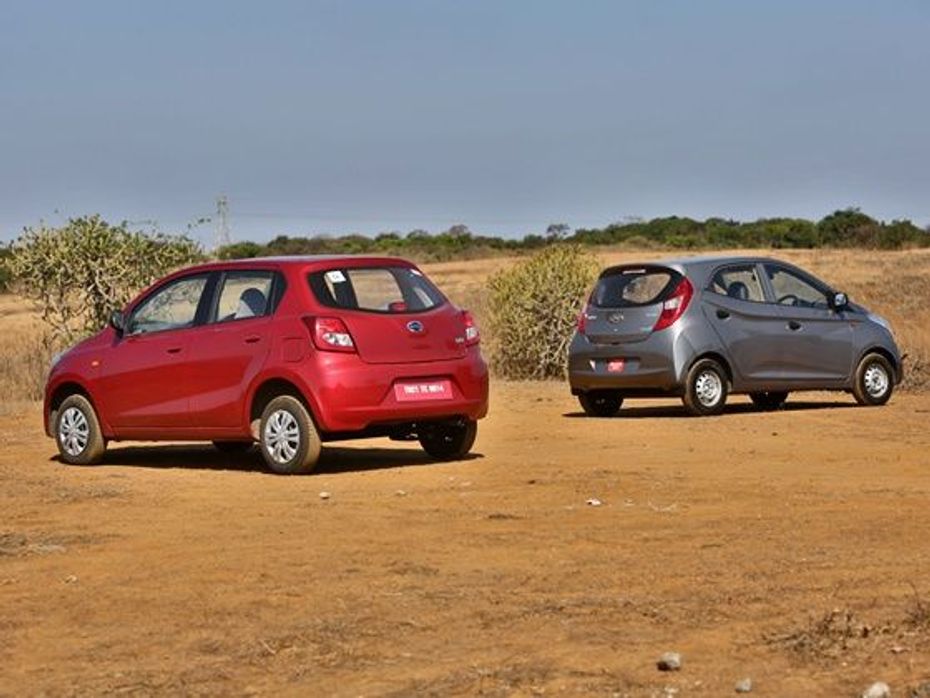
The chalk and cheese differences in design continue along to the rear of the car. Where the Eon features large vertically stacked tail lamps that merge into the rounded boot area, the Go features a slight stubby boot section and large conventionally placed tail lamps. The slightly stubby boot design also helps the Go when it comes to boot space. Where the Eon’s boot is small and as expected of a tiny hatchback, the Go’s boot is big enough to fit a rather oversized automotive journalist in decent comfort, although we do not encourage such practices.
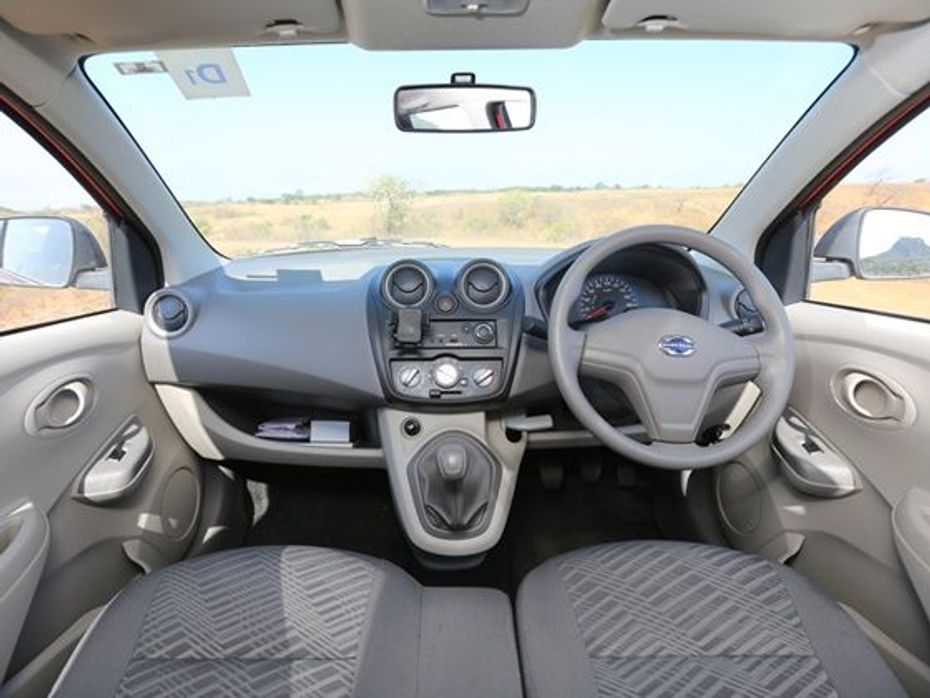
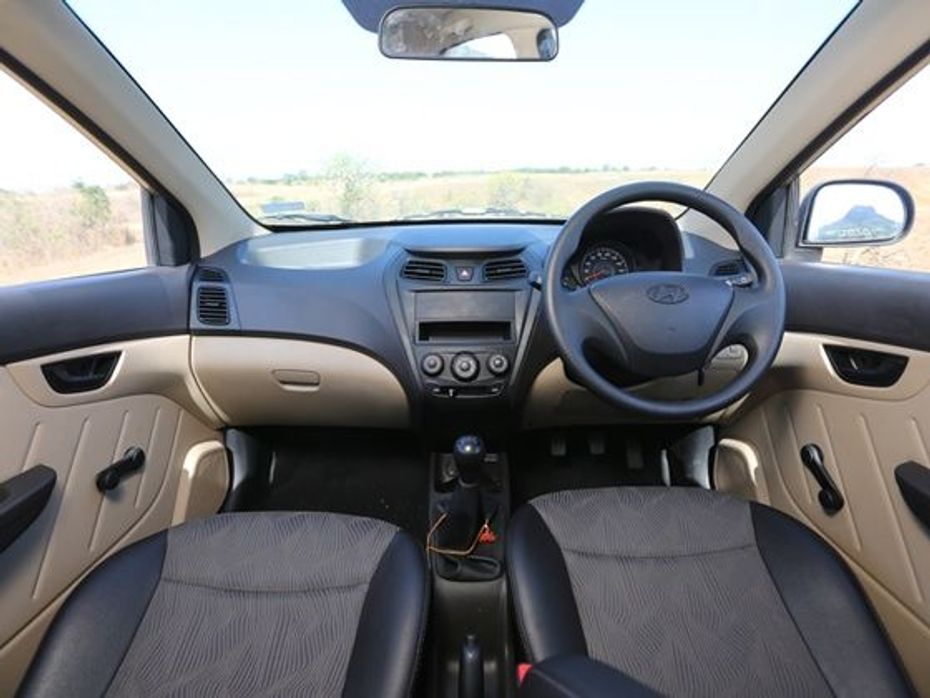
Moving to the interior, sheer design wise, the Eon is eons ahead of the Go. With its multilayered dashboard and curves that would put the command module on the Starship Enterprise to shame, the Eon’s dashboard will continue to look good ten years down the line. The Go on the other hand has taken the directionality of practicality. Yes, it might not have a lid on the glove compartment or a conventional audio player, but from a useable and ergonomic perspective, it is pretty good. Although the Go is larger on the inside as compared to the Eon, strangely it does feel a little cramped in the driver's seat. This is mainly because of the high mounted gearshift and the unconventional handbrake lever. If we could change just one thing about the Go’s interiors, it would be the positioning of the handbrake lever. The grab handle on the handbrake is intrusive to the driver’s space and more often than not do you find it brushing against your knees while you drive.
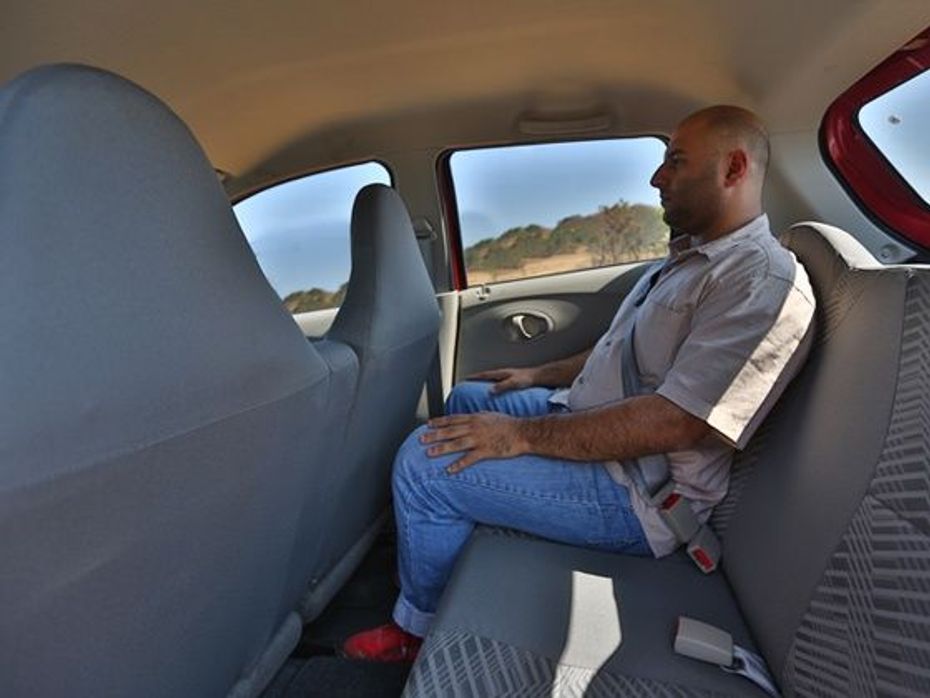
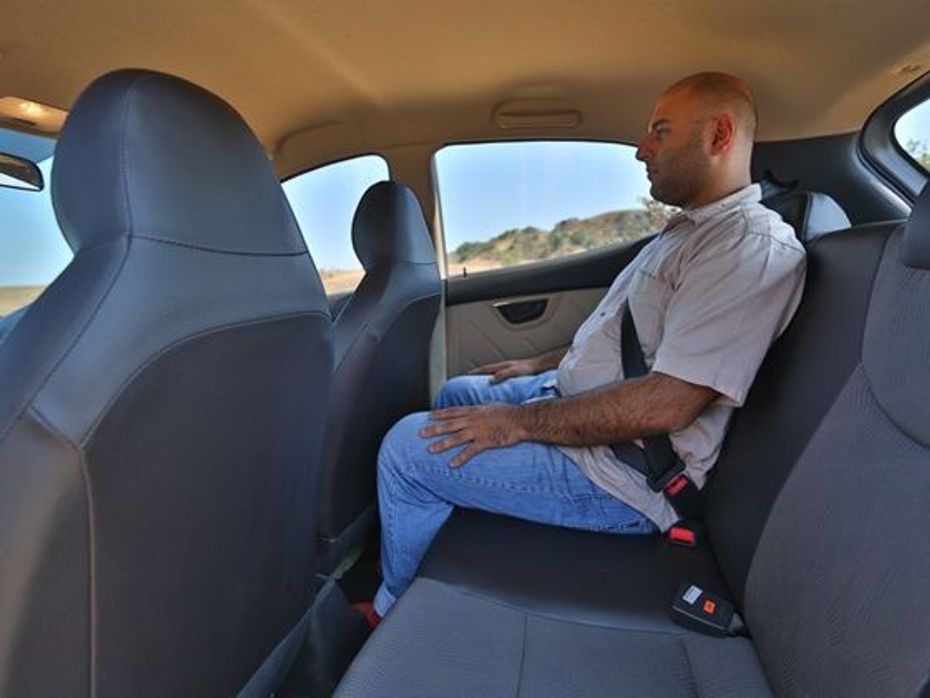
As we have mentioned, the Go has more space in the front, more space in the rear and more space in the boot than the Eon. A few places where the Eon scores better though is overall seating comfort. The front seats for example offer slightly better back support than the Go. The rear seats though are at par with those found in the Go, with less overall space, of course. The Datsun Go doesn't offer inertia reel seatbelts in the rear, though, making it extremely inconvenient for passengers.
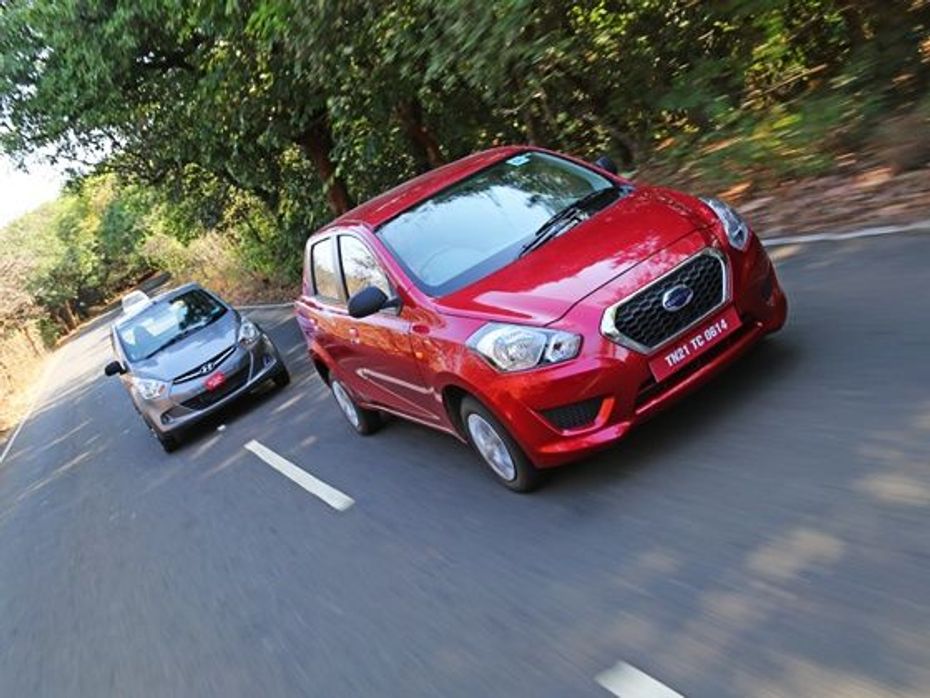
Lets talk engines: the Datsun Go is powered by a 1.2-litre, 3-cylinder, petrol engine as found in the Nissan Micra but makes a little less power at 68PS. The Hyundai Eon gets a 0.8-litre, 3-cylinder petrol engine making 56PS. From a spirited driver’s perspective, the Datsun Go is the clear winner on paper here and the same holds true on tarmac too. Where the Datsun feels eager, the Eon’s tiny engine feels woozy and noisy. In fact, even the similarly sized 0.8-litre Maruti Alto 800’s engine feels aggressive and eager compared to the Eon. That said, the Eon does feel quite nimble and easy to drive in the city. The Go on the other hand feels comfortable everywhere: in the city, on the open highway or on the twisty bits. The Go though does need some work and refinement in the gearbox department. Although the throws are short, the overall feel is just a tad bit rubbery and lacks feedback. The Hyundai Eon’ gearbox does its job with comparatively better results.

The Datsun scores another brownie point for its brakes. Not only do these bite well, but the pedal feedback is impressive too. The Eon's brakes aren't bad, but these don't feel as potent as the Datsun's. The Datsun Go also edges ahead when it comes to handling. In the city, the Eon feels nimbler due to its smaller dimensions, but the Go feels more sorted around corners and on the highway.

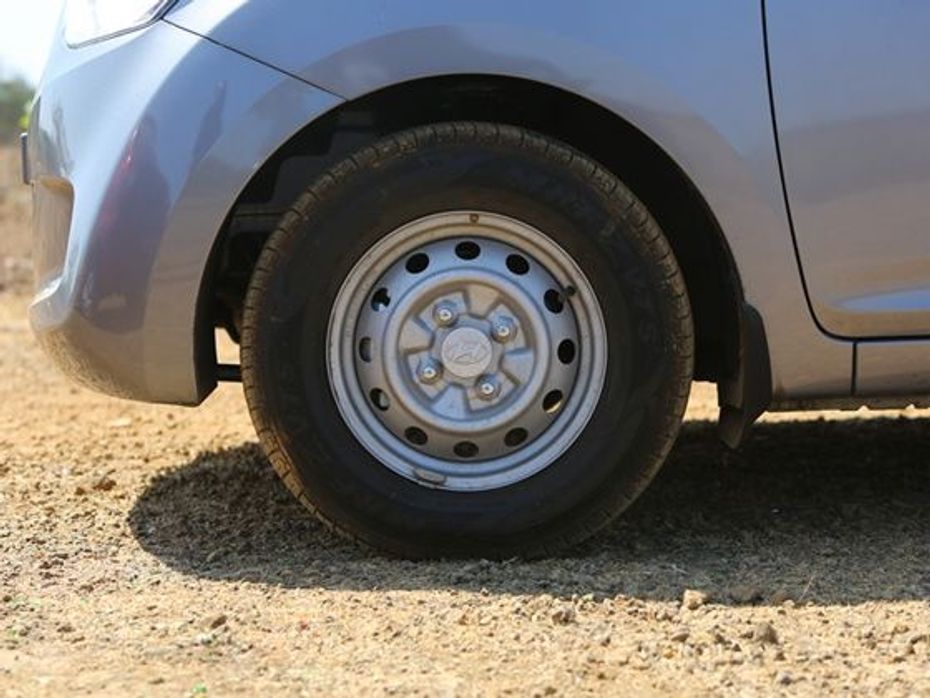
Pushing both the Hyundai Eon and the Datsun Go reveals the difference. Where the Hyundai Eon quickly shows its suspension capabilities as a thoroughbred city car that hates to be pushed hard, the Datsun Go does show some promising potential. From a sheer suspension setup perspective, the new-age Datsun Go still has a bit of old-school Datsun left it it. Yes the Datsun Go is slightly tail happy while cornering under heavy braking, but it feels planted and controlled even while on the edge. The biggest problem with the Datsun Go’s handling prowess today though is its tyres. The Indonesian Strada tyres offer no grip whatsoever squealing away to glory at as little as 40kmph. Changing the tyres to those from a better brand would make the Go handle at least 40-50 per cent better than before. But, as the Go was made at a strict price point, we don’t see a better tyre package from the factory anytime soon. Where the Go runs on 155/70 R13 tyres, the Eon gets 145/80 R12 section tyres. Both the Hyundai Eon and the Datsun Go could do with a set of bigger wheels and tyres, especially in the higher end versions.
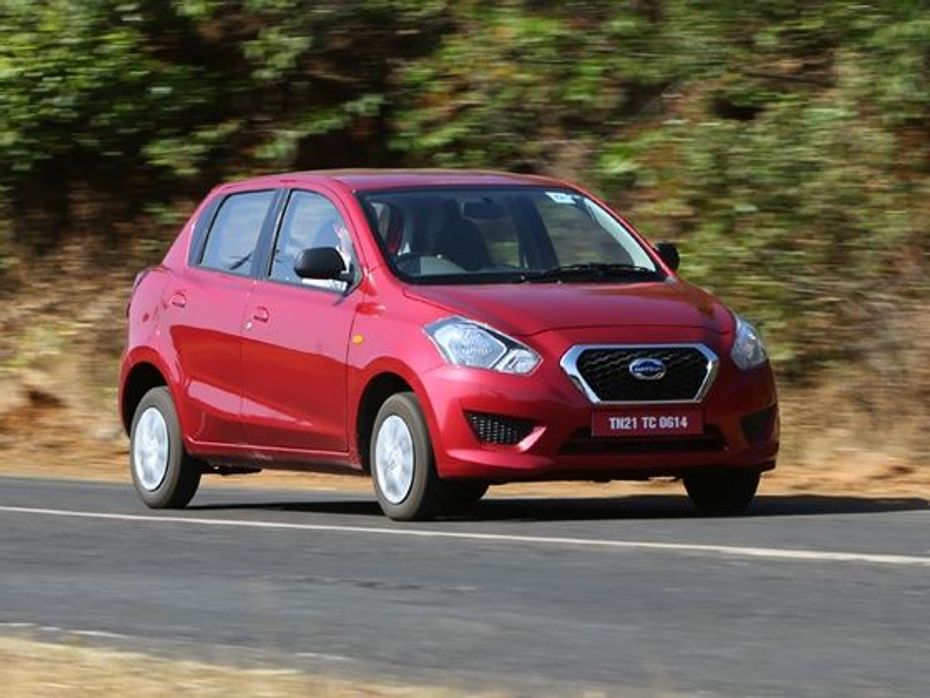
The Datsun Go has been made with one aim in mind: to go up against the likes of the Hyundai Eon and the Maruti Suzuki Alto and attract the first time buyer. Although these cars look and feel different on paper, they are actually as close to each other as can get with two very different manufacturer approaches. Where the Eon is more of a city slicker, the Go is a more complete hatchback and a better package overall. The Go has a better engine, handles better, has more interior and boot space and according to us, looks a little better. The Hyundai Eon ranges from Rs 2.83-3.82 lakh wheras the Datsun Go ranges from Rs 3.12-3.70 lakh (ex-showroom, Delhi) making the Datsun a better value for money proposition too.

Datsun Go vs Hyundai Eon Comparison Review: In Pictures!

Nissan Datsun Go vs Maruti Suzuki Celerio vs Hyundai i10: Spec...

Updated Datsun Go and Go+ Launched Ahead of Festive Season

Datsun launches Go and Go+ Style Editions

Datsun Go gets 2-star rating in ASEAN NCAP test

Datsun Go NXT Launched at Rs 4.09 Lakh

Datsun GO with optional airbag launched

Discounts on Datsun Go

Global NCAP asks Nissan to withdraw Datsun Go from India

Datsun Go: Special Coverage
 Mahindra Scorpio N
Mahindra Scorpio N
 Toyota Fortuner
Toyota Fortuner
 Royal Enfield Hunter 350
Royal Enfield Hunter 350
 Royal Enfield Classic 350
Royal Enfield Classic 350
 Hyundai Creta
Hyundai Creta
India's largest automotive community
 Maruti Brezza
Rs. 8.34 Lakh
Maruti Brezza
Rs. 8.34 Lakh
 Maruti FRONX
Rs. 7.51 Lakh
Maruti FRONX
Rs. 7.51 Lakh
 Mahindra Scorpio
Rs. 13.61 Lakh
Mahindra Scorpio
Rs. 13.61 Lakh
 Maruti Grand Vitara
Rs. 10.99 Lakh
Maruti Grand Vitara
Rs. 10.99 Lakh
 Toyota Innova Crysta
Rs. 19.99 Lakh
Toyota Innova Crysta
Rs. 19.99 Lakh